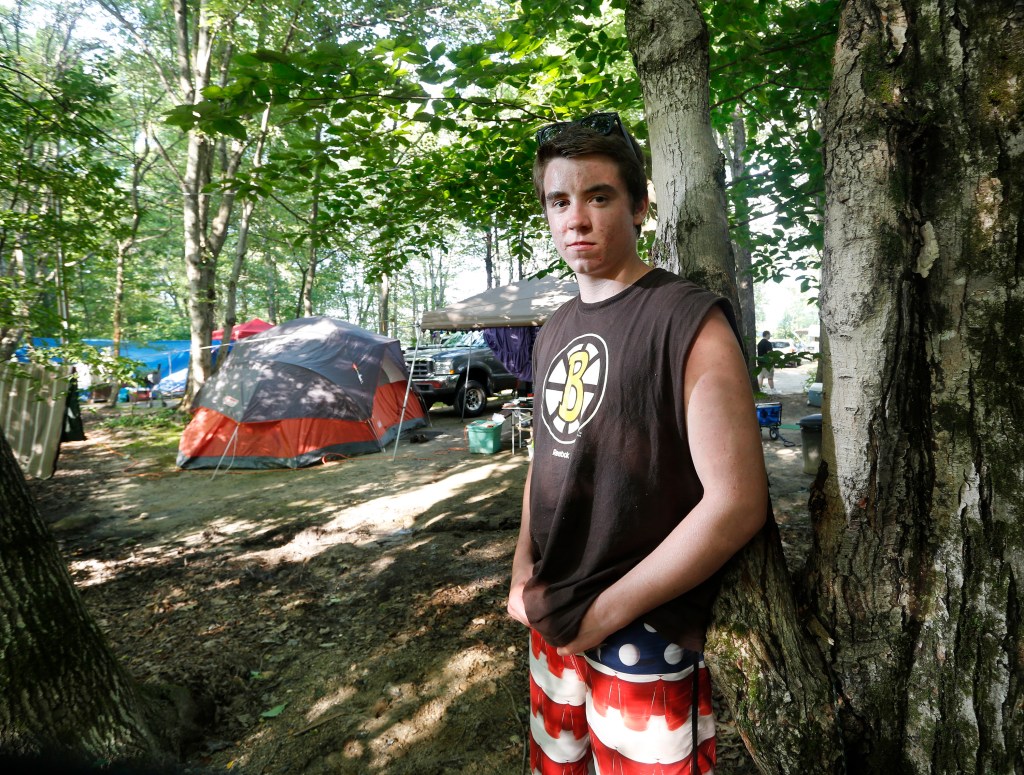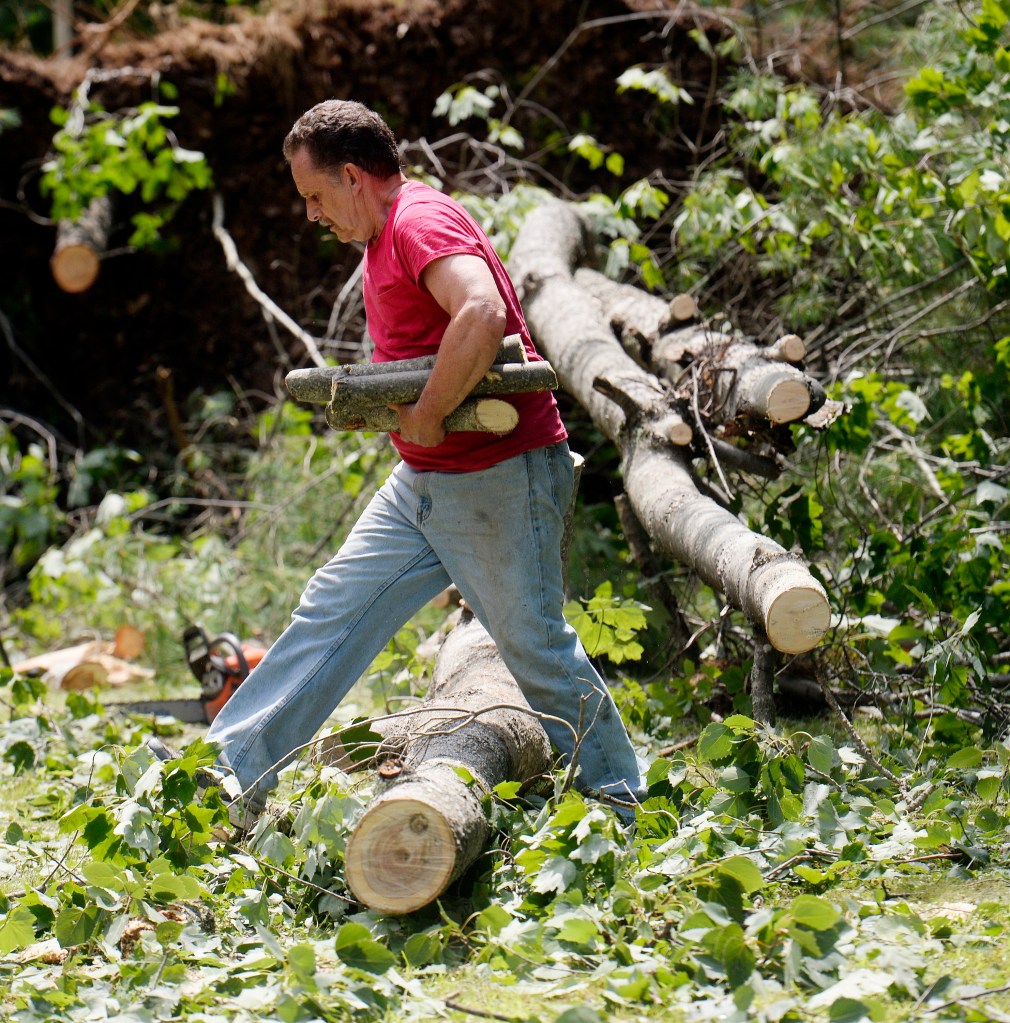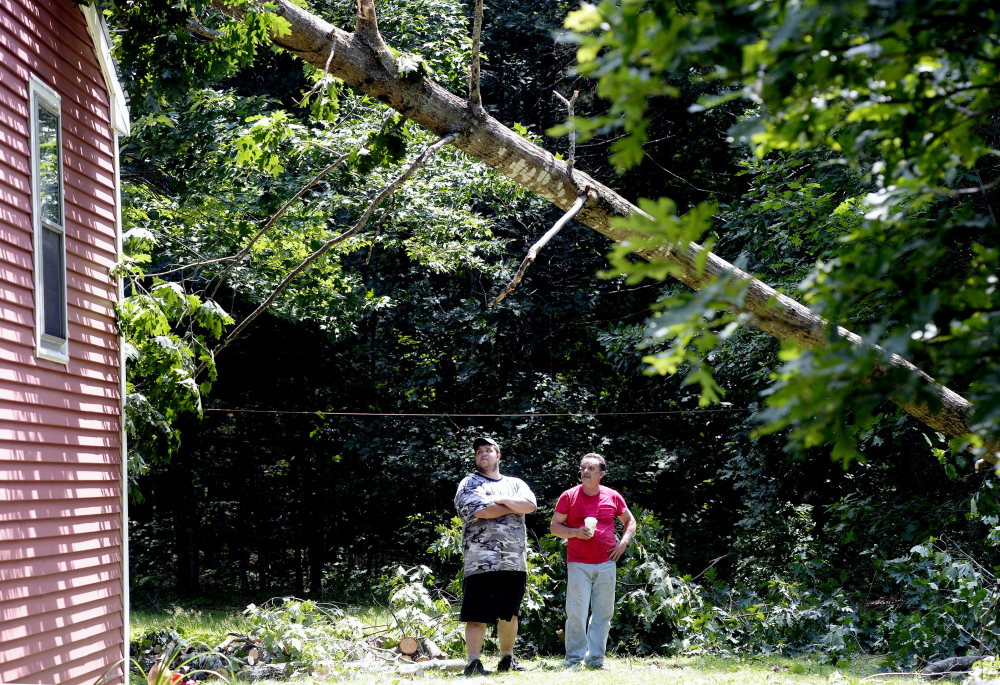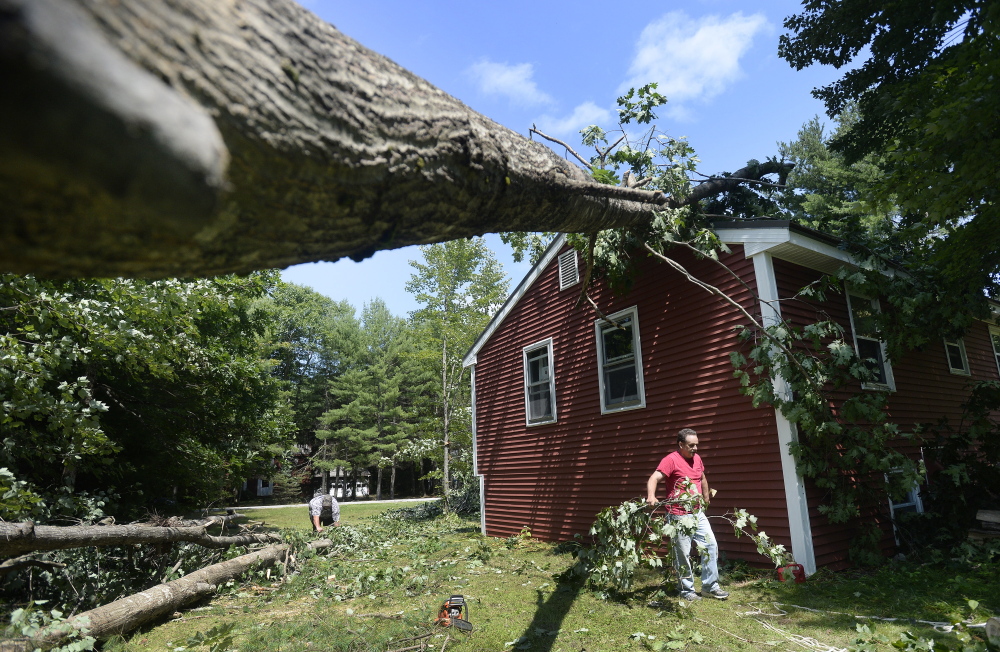NAPLES — There was no warning. Just a loud crack overhead, then a surge of electricity going from the nearby tree and through Sean Greeley’s body.
“It felt like someone picked me up and shook me,” Greeley said.
The 16-year-old from Walpole, Massachusetts, scrambled to a nearby car, where members of his family had found cover.
“Holy (expletive),” he said once he was safe inside the car. “I just got struck by lightning.”
A family member called 911 and then brought Greeley up to the office at the Four Seasons campground on Long Lake. An ambulance arrived within a couple of minutes after he’d been hit by the lightning at 5:05 p.m. Monday.
He was taken to a hospital in Bridgton, one town over from the campground. Doctors checked his heart and released him.
The only mark of what happened to him is a slight burn on the right side of his face.
Greeley and his family have been coming to Four Seasons campground for years.
“I was pretty lucky I wasn’t hurt, I think,” he said Tuesday from the campground, where he and his family returned to continue their vacation.
Monday’s wild weather also included a tornado in Limington, and severe thunder and lightning in the lakes area of western Maine.
The storm tossed up trees and washed out roads. In Fryeburg, 15 people who were canoeing on the Saco River had to be rescued after torrential rain caused the river to swell significantly in a short time.
Meteorologists with the National Weather Service surveyed the damage on Tuesday, confirming the tornado in Limington, the second in Maine in about two weeks. Earlier this month, a tornado touched down in St. Albans.
In a typical storm with high winds, trees would blow down in the same direction, said meteorologist Tom Hawley. In a tornado, the damage is more haphazard, which experts found Tuesday, particularly in Limington.
“The signature of a tornado is really a circular motion pattern,” Hawley said.
Josh St. Pierre, who lives on Paul’s Way in Limington, was working Monday afternoon when he got a call from a friend who told him, “I saw your house on the news.”
When St. Pierre got home, he saw five big trees down on his property, including one that tore down the power lines running to his house and another that fell on the house, putting dents in the metal roof.
He was told Tuesday that his house was directly in the path of the tornado.
“You think living in Maine you’re not going to see many tornadoes,” he said. “At least I’ve got a few cords of wood to burn in the stove this winter.”
Tornadoes are indeed rare in Maine, but they have been increasing in recent years. For the last six years, there have been an average of four per years.
For the previous 60 years, the average was closer to two per year, according to the weather service.
Monday’s tornado, which landed at 3:49 p.m. and lasted about three minutes, was rated 0 on the Enhanced Fujita scale – the lowest category used by meteorologists – but still featured 80 mph winds and cut a path at least 300 yards long and at least 80 yards wide. Weather service officials said the tornado also bent a flagpole to a 90-degree angle.
Hawley said he doesn’t necessarily think the weather has grown more severe in recent years, but more people are paying attention and are able to share photos and video of severe weather.
“Everyone has a cellphone camera,” he said. “In fact, one of the first things we do now during a storm, as meteorologists, is check social media.”
Greeley said he didn’t have time to capture any of the storm on his own phone, and said he doubts he’ll stick around long enough the next time a thunderstorm is on the horizon.
“If I see one, I’ll probably start running pretty quick,” he said.
Andrew Van Derzee, who owns Four Seasons campground, said this was only the second lightning strike he’s seen in 34 years.
“We were more concerned about waterspouts on the lake,” he said.
Send questions/comments to the editors.








Comments are no longer available on this story